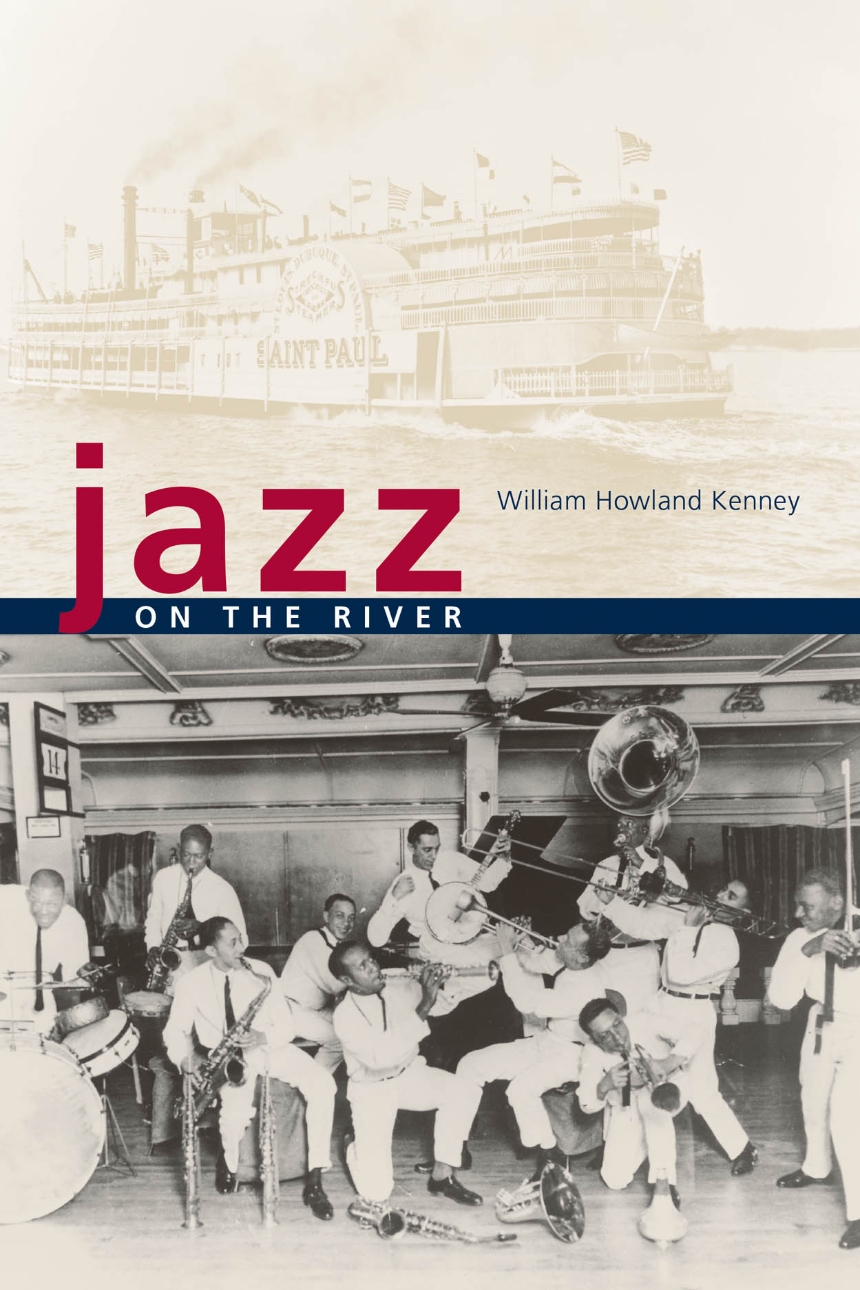Jazz on the River
Just after World War I, the musical style called jazz began a waterborne journey outward from that quintessential haven of romance and decadence, New Orleans. For the first time in any organized way, steam-driven boats left town during the summer months to tramp the Mississippi River, bringing an exotic new music to the rest of the nation. For entrepreneurs promoting jazz, this seemed a promising way to spread northward the exciting sounds of the Crescent City. And the musicians no longer had to wait for folks upriver to make their way down to New Orleans to hear the vibrant rhythms, astonishing improvisations, and new harmonic idioms being created.
Simply put, when jazz went upstream, it went mainstream, and in Jazz on the River, William Howland Kenney brings to life the vibrant history of this music and its seduction of the men and women along America’s inland waterways. Here for the first time readers can learn about the lives and music of the levee roustabouts promoting riverboat jazz and their relationships with such great early jazz adventurers as Louis Armstrong, Fate Marable, Warren "Baby" Dodds, and Jess Stacy. Kenney follows the boats from Memphis to St. Louis, where new styles of jazz were soon produced, all the way up the Ohio River, where the music captivated audiences in Cincinnati and Pittsburgh alike.
Jazz on the River concludes with the story of the decline of the old paddle wheelers-and thus riverboat jazz-on the inland waterways after World War II. The enduring silence of our rivers, Kenney argues, reminds us of the loss of such a distinctive musical tradition. But riverboat jazz still lives on in myriad permutations, each one in tune with our own times.
Simply put, when jazz went upstream, it went mainstream, and in Jazz on the River, William Howland Kenney brings to life the vibrant history of this music and its seduction of the men and women along America’s inland waterways. Here for the first time readers can learn about the lives and music of the levee roustabouts promoting riverboat jazz and their relationships with such great early jazz adventurers as Louis Armstrong, Fate Marable, Warren "Baby" Dodds, and Jess Stacy. Kenney follows the boats from Memphis to St. Louis, where new styles of jazz were soon produced, all the way up the Ohio River, where the music captivated audiences in Cincinnati and Pittsburgh alike.
Jazz on the River concludes with the story of the decline of the old paddle wheelers-and thus riverboat jazz-on the inland waterways after World War II. The enduring silence of our rivers, Kenney argues, reminds us of the loss of such a distinctive musical tradition. But riverboat jazz still lives on in myriad permutations, each one in tune with our own times.
Read an excerpt.
248 pages | 23 halftones, 1 map | 6 x 9 | © 2005
History: American History
Music: General Music
Reviews
Table of Contents
Acknowledgments
Introduction: Playing Changes: Music, Movement, and the Performance of Power on "America’s River Nile"
1. "Masters of the River": Streckfus Steamers, Inc. and the "Swan Complex"
2. Fate Marable, Musical Professionalism, and the Great Migration
3. Groovin’ on the River: Louis Armstrong and Riverboat Culture
4. From Beale Street to Market Street: Music and Movement Through Memphis and St. Louis
5. "Blue River": Bix Beiderbecke and Jess Stacy on the Mississippi
6. Steamin’ to the End of the Line: Jazz On, Along, and Beyond the Ohio River
Epilogue: The Decline and Fall of Excursion Boat Jazz in St. Louis
Appendix A: Excursion Boat Musicians
Appendix B: River Songs and Tunes
Notes
Index
Introduction: Playing Changes: Music, Movement, and the Performance of Power on "America’s River Nile"
1. "Masters of the River": Streckfus Steamers, Inc. and the "Swan Complex"
2. Fate Marable, Musical Professionalism, and the Great Migration
3. Groovin’ on the River: Louis Armstrong and Riverboat Culture
4. From Beale Street to Market Street: Music and Movement Through Memphis and St. Louis
5. "Blue River": Bix Beiderbecke and Jess Stacy on the Mississippi
6. Steamin’ to the End of the Line: Jazz On, Along, and Beyond the Ohio River
Epilogue: The Decline and Fall of Excursion Boat Jazz in St. Louis
Appendix A: Excursion Boat Musicians
Appendix B: River Songs and Tunes
Notes
Index
